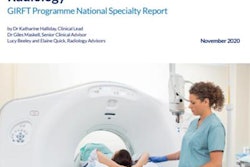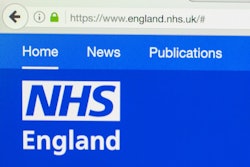
Tech companies -- particularly radiology information system (RIS) providers -- must improve data presentation for radiologists so they can put their case better to management about the significant workforce shortages facing the specialty, according to a new report from the U.K. Royal College of Radiologists (RCR).
"Access to better information will enable radiologists to justify their arguments for funding for radiologist posts and increased recruitment," the authors stated in the 32-page document called "Radiology business intelligence for service planning and workforce modeling."
 The guidance provides information about the importance of data transparency and examples of real-time business intelligence.
The guidance provides information about the importance of data transparency and examples of real-time business intelligence.Most existing RIS -- with or without plug-ins -- collect periodic, retrospective data that already consist of historic information. Modern RIS should enable front-line radiology staff to produce and readily analyze real-time data, identify bottlenecks and backlogs, and generate potential solutions.
"All radiologists must be familiar with simple business intelligence concepts and able to calculate demand and capacity mismatches in service when required," the authors wrote. "Business intelligence is a tool that can map radiology workflow. Real-time analysis enables departments to monitor demand, activity, and waiting times against local and national benchmarks, in granular detail."
Data transparency
Transparent data and metrics can boost staff morale and result in teams pulling together, they continued. Demand, activity, capacity, and turnaround times are the key data items in radiology, and understanding these will empower radiologists to overcome the challenges they face, not least the "workforce crisis."
Radiologists are involved in many nonmeasurable activities, including multidisciplinary team meetings (MDTMs), teaching and training, patient consultation, governance, and service development. These activities cannot be captured via RIS data analysis, which makes the RIS' use as an individual performance evaluation tool meaningless, according to the authors.
A typical diagnostic radiologist may spend only 40% of his/her total work time on reporting, and 10% to 20% on procedures. An interventional radiologist may spend 30% of their job-planned time on procedures and 20% on reporting. Overall only about 60% of a typical radiologist's job-planned time may be spent on measurable activities.
"It is essential that radiologists have full transparency of business intelligence units used in the database, and also understand how the RIS measures capacity from their job-planned sessions," they noted.
There are three main measurable activities in radiology departments:
- Vetting and protocoling -- the process of accepting or rejecting a referral to a radiology department (and defining or editing a protocol where relevant)
- Image acquisition and intervention -- the act of imaging a patient using an x-ray machine, CT scanner, ultrasound machine, or similar
- Reporting
According to the RCR report, "Accurate derived data relies on accuracy of the application of data definitions and also accurate recording of data. Radiologists must be able to visualize directly recorded, referenced, and derived data within the RIS workflow to prioritize tasks and improve workflow."
The guidance provides information about the importance of data transparency and examples of real-time business intelligence. There are also appendices to support the implementation of the recommendations.
You can download a copy of the report free-of-charge from the RCR website.



















